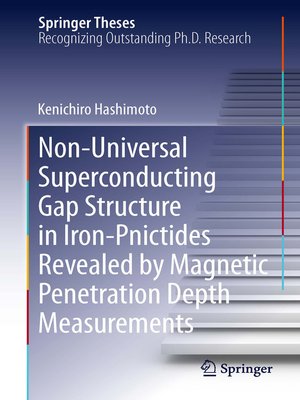Non-Universal Superconducting Gap Structure in Iron-Pnictides Revealed by Magnetic Penetration Depth Measurements
ebook ∣ Springer Theses
By Kenichiro Hashimoto

Sign up to save your library
With an OverDrive account, you can save your favorite libraries for at-a-glance information about availability. Find out more about OverDrive accounts.
Find this title in Libby, the library reading app by OverDrive.



Search for a digital library with this title
Title found at these libraries:
| Library Name | Distance |
|---|---|
| Loading... |
In this book the author presents two important findings revealed by high-precision magnetic penetration depth measurements in iron-based superconductors which exhibit high-transition temperature superconductivity up to 55 K: one is the fact that the superconducting gap structure in iron-based superconductors depends on a detailed electronic structure of individual materials, and the other is the first strong evidence for the presence of a quantum critical point (QCP) beneath the superconducting dome of iron-based superconductors.
The magnetic penetration depth is a powerful probe to elucidate the superconducting gap structure which is intimately related to the pairing mechanism of superconductivity. The author discusses the possible gap structure of individual iron-based superconductors by comparing the gap structure obtained from the penetration depth measurements with theoretical predictions, indicating that the non-universal superconducting gap structure in iron-pnictides can be interpreted in the framework of A1g symmetry. This result imposes a strong constraint on the pairing mechanism of iron-based superconductors.
The author also shows clear evidence for the quantum criticality inside the superconducting dome from the absolute zero-temperature penetration depth measurements as a function of chemical composition. A sharp peak of the penetration depth at a certain composition demonstrates pronounced quantum fluctuations associated with the QCP, which separates two distinct superconducting phases. This gives the first convincing signature of a second-order quantum phase transition deep inside the superconducting dome, whichmay address a key question on the general phase diagram of unconventional superconductivity in the vicinity of a QCP.







